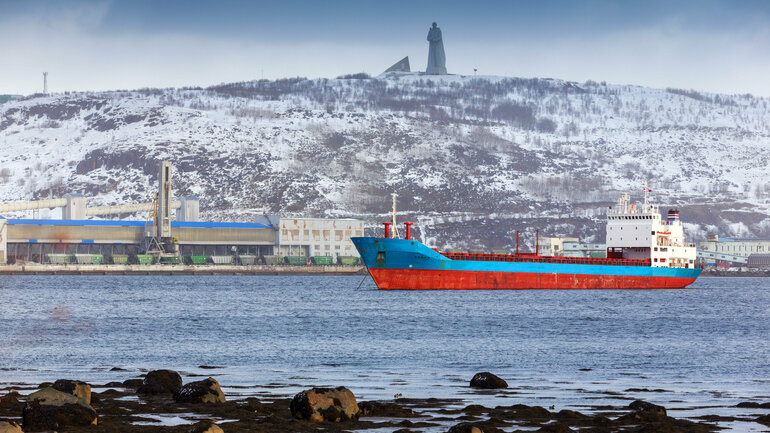Russian media and climate change in the Arctic

The Russian Arctic is facing unprecedented industrial development and an urgent environmental transformation. While the government seeks further exploration of the world’s richest reserves of natural resources, climate change is affecting the Arctic several times faster than the Earth on average. But, as some Russian media would have it, climate change simply makes the country’s cold climate warmer. For people living in the Arctic, such views are too simplistic.
In The Siberian Curse, published in 2003, American political scientists Fiona Hill and Clifford G. Gaddy argue that the accelerated urbanisation of Siberia—and the Arctic—was a mistake of the Soviet planned economy, a mistake to be corrected. A harsh climate and vast distances are suitable for small settlements of shift workers, rather than for large cities with permanent populations. High costs of living, rough terrain, and poor road connections make impossible a similar process in a competitive market economy. Public intellectuals and national media in Russia criticised the book vigorously: the fossil-fuel economy pays well for irrational urban planning, while better technology and milder winters ease citizens’ worries.
The reality is more complex. The problem is that climate change is not on the agendas even of Arctic-based media and journalists. At the Arctic Media World congress in Russia’s Salekhard in December 2018, Norwegian and Swedish journalists had a hard time talking about climate-change risks to their colleagues from eight Arctic regions of Russia. In short, they had different opinions about environmental concerns.
The curse is not over
The Arctic attracts with its colossal natural resources. Industrial development in Yamal-Nenets Autonomous Okrug (YNAO) in northwest Siberia has led to megaprojects such as the construction of a liquefied natural gas (LNG) plant near the port of Sabetta, 600 kilometres north of the Arctic Circle. The Salekhard–Igarka Railway project, abandoned in the 1950s, has been relaunched as the Northern Latitude Railway. In addition, plans to develop the Northern Sea Route and expand Russia’s atomic ice-breaking fleet will mean the renewal of old ports and the construction of new ones and meteorological stations along the Arctic coast.
Naturally, these are popular topics among YNAO news media. However, few questions are being asked about the projects’ economic feasibility and the rationality of their costs in light of climate change.
Hill and Gaddy wrote about Siberia’s ‘curse’ in general, but their argument is especially relevant for such regions as YNAO, where economic development and environmental change go hand in hand. Half of the global Arctic population, about 2 million people, lives in the Russian Arctic, half a million of them in YNAO. Economic interests dominate their public sphere, but local news media either underestimate the threats of global warming or misrepresent the science of climate change. During my field trips to YNAO in August and December 2018, I found that local journalists were partly unaware and partly in denial of the fact that human activity, especially the burning of fossil fuels, is the main factor accelerating climate change.
An adequate response needs critical media
In the rapidly changing environment of the Arctic, industrial development becomes even more expensive and riskier than before. However, as our research for the international Mediaclimate project shows, Russian journalists are among the least interested and informed when it comes to climate change. Although most Russian climatologists agree with the global scientific consensus about climate change, the Russian media still consider this topic politicised, full of uncertainties and conspiracy theories. And even if journalists follow the consensus, they tend to simplify complex science by reducing climate change to warmer weather and milder winters, which they see as a positive change for the otherwise freezing conditions of the Arctic. For them, it is as if global warming alleviates the Siberian curse.
In fact, global warming melts Siberian permafrost, multiplies the number of extreme weather events, degrades old infrastructure, and complicates new development projects. In 2014, short periods of freezing and thawing in YNAO forged an icy crust over reindeer pastures, and tens of thousands of animals starved to death. The hot summer of 2016 thawed centuries-old cattle graves, causing an anthrax outbreak. Natural scientists have recently discovered a new phenomenon on Yamal: the awakening of cryovolcanoes that explode and release large volumes of methane, increasing the greenhouse effect on the atmosphere.
In such emergencies, YNAO journalists usually have access to official sources only. Newsrooms cannot afford to send reporters on helicopters to remote areas. Critical reporting on, and investigating of, the causes of events is not a priority. Panic prevention is the main task, but an adequate response demands broader discussion and analysis. As climate-change impacts and industrial interventions in these hard environmental and economic conditions increasingly take their toll, Arctic journalism has important potential to help local communities cope with the Siberian curse.
Dmitry Yagodin is a postdoctoral researcher in the Research Group on the Russian Environment at the Aleksanteri Institute, University of Helsinki, Finland.